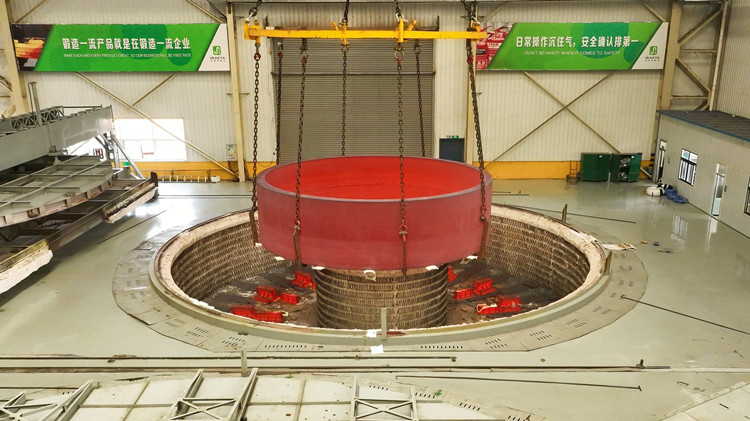- tyler@kirail.com
- +86 15603721115
According to the forging temperature, it can be divided into hot forging, warm forging and cold forging; according to the forming mechanism, it can be divided into free forging, die forging, ring rolling and special forging.
1. Open die forging
It refers to the processing method of forging with simple general tools, or directly applying external force to the blank between the upper and lower anvils of the forging equipment to deform the blank and obtain the required geometric shape and intrinsic quality. Forgings produced by free forging method are called free forgings. Free forging mainly produces small batches of forgings, and uses forging equipment such as forging hammers and hydraulic presses to process the blanks to form qualified forgings. The basic processes of free forging include upsetting, drawing, punching, shearing, bending, twisting, displacement and forging. Free forging adopts hot forging.

2. Die forging
Die forging is divided into open die forging and closed die forging. The metal blank is compressed and deformed in the forging chamber to obtain a blank of a certain shape. Die forging can be divided into hot die forging, warm forging and cold forging. Warm forging and cold forging are the future development direction of die forging, representing the level of forging technology.
Die forging can be divided into ferrous metal die forging, non-ferrous metal die forging and powder product molding according to the material. As the name implies, the materials for die forging are ferrous metals such as carbon steel, non-ferrous metals such as copper and aluminum, and powder metallurgy materials.
Extrusion should be classified as die forging, which can be divided into heavy metal extrusion and light metal extrusion.
Closed die forging and closed upsetting are two advanced processes of die forging, and complex forgings can be completed in one or more processes. Because there is no flash, the forging has a small force area and a small load. However, care should be taken not to completely limit the blank, but to strictly control the volume of the blank, control the relative position of the forging die, and measure the forging to reduce the wear of the forging die.
3. Ring forging
Grinding rings refer to ring parts of different diameters produced by special equipment ring grinding machines. They are also used to produce wheel-shaped parts such as automobile wheels and train wheels.
4. Special forging
Special forging includes roll forging, wedge cross rolling, radial forging, liquid die forging and other forging methods, which are more suitable for the production of some special shape parts. For example, roll forging can be used as an effective pre-forming process to greatly reduce the subsequent forming pressure; wedge cross rolling can produce parts such as steel balls and transmission shafts; radial forging can produce large forgings such as barrels and step shafts.